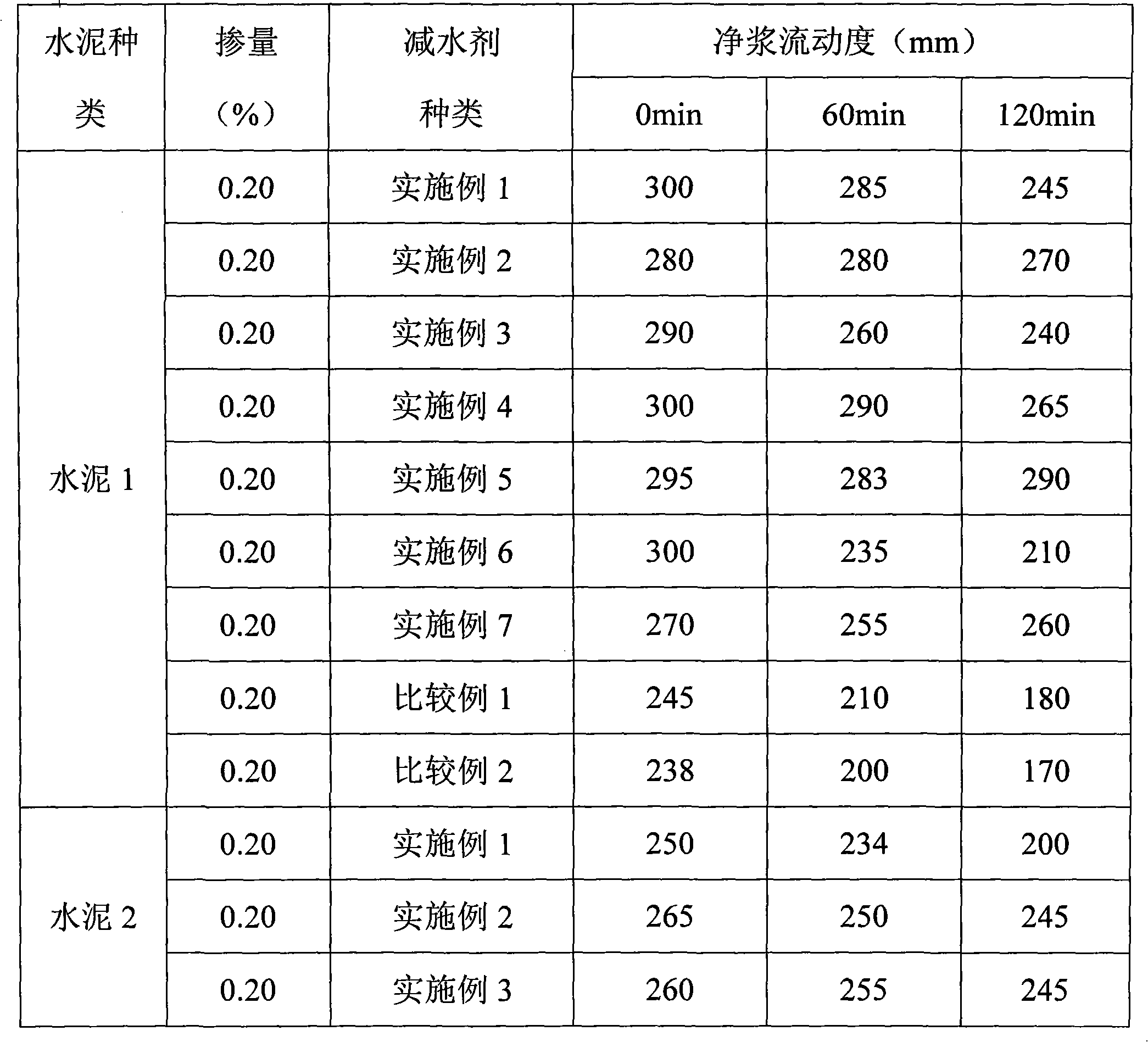Normal-temperature synthesis method for polycarboxylic acid water-reducing agent
A technology for synthesizing and superplasticizing agents at room temperature, which is applied in the field of preparation of high-performance concrete superplasticizers. It can solve the problems of difficult reaction control, general dispersion effect, and increased production costs, so as to achieve excellent application performance, reduce production costs, and save energy. cost effect
- Summary
- Abstract
- Description
- Claims
- Application Information
AI Technical Summary
Problems solved by technology
Method used
Image
Examples
Embodiment 1
[0032] Put 72.0g of polyoxyethylene polymerization degree n=15 methyl alkenyl polyoxyethylene ether (TPEG) and 114.45g of water into a four-neck flask, stir in a water bath and heat to 5°C. After the macromonomer is completely dissolved, 2.2g of acrylic acid, 2.94g of maleic anhydride, 0.22g of sodium allyl sulfonate, 0.75g of ammonium persulfate, and 0.17g of sodium bisulfite are sequentially added every five minutes. After constant temperature reaction for 3.0 hours, 9.0 g of NaOH solution with a mass fraction of 40% was added to adjust pH=6. The prepared concentration is 40% water reducer product 1.
Embodiment 2
[0034] Put 72.0 g of polyoxyethylene polymerization degree n=23 allyl polyethylene glycol (APEG) and 49.1 g of water into a four-neck flask, stir and heat in a water bath to 10°C. 2.46g of potassium persulfate was dissolved in 46.74g of water to make a solution with a mass fraction of 5%. 1.8g of sodium ascorbate was dissolved in 34.2g of water to make a solution with a mass fraction of 5%. After all the macromonomers were dissolved, 2.16 g of acrylic acid, 7.8 g of citraconic acid, and 0.47 g of sodium methacrylic acid were added sequentially every five minutes. After stirring for five minutes, potassium persulfate solution and sodium ascorbate solution were added dropwise for 2.0 hours, and after the addition was completed, the mixture was reacted at constant temperature for 2.0 hours. 21 g of KOH solution with a mass fraction of 40% was added to adjust pH=7. The prepared concentration is 40% water reducer product 2.
Embodiment 3
[0036] Put 72.0 g of polyoxyethylene polymerization degree n=45 methoxypolyethylene glycol acrylate (MPEG-AA) and 102.8 g of water into a four-neck flask, stir and heat in a water bath to 15°C. 4.8g of ascorbic acid was dissolved in 43.2g of water to make a solution with a mass fraction of 10%. After the macromonomer is completely dissolved, 4.32g of acrylic acid, 10.45g of fumaric acid, 1.24g of sodium styrene sulfonate, and 4.34g of sodium persulfate are sequentially added every five minutes. After stirring for five minutes, the ascorbic acid solution was added dropwise for 2.0 hours. After the dropwise addition was completed, the reaction was carried out at constant temperature for 3.0 hours. Add 14.4 g of ethylenediamine to adjust pH=8. The prepared concentration is 40% water reducer product 3.
PUM
| Property | Measurement | Unit |
|---|---|---|
| degree of polymerization | aaaaa | aaaaa |
Abstract
Description
Claims
Application Information
 Login to View More
Login to View More - R&D
- Intellectual Property
- Life Sciences
- Materials
- Tech Scout
- Unparalleled Data Quality
- Higher Quality Content
- 60% Fewer Hallucinations
Browse by: Latest US Patents, China's latest patents, Technical Efficacy Thesaurus, Application Domain, Technology Topic, Popular Technical Reports.
© 2025 PatSnap. All rights reserved.Legal|Privacy policy|Modern Slavery Act Transparency Statement|Sitemap|About US| Contact US: help@patsnap.com



